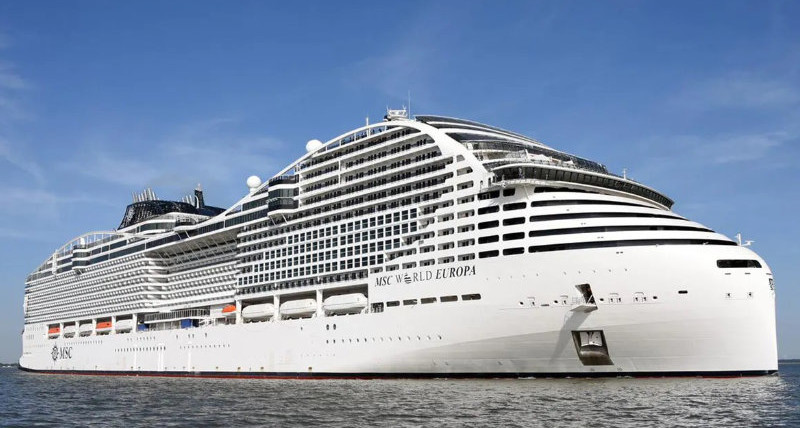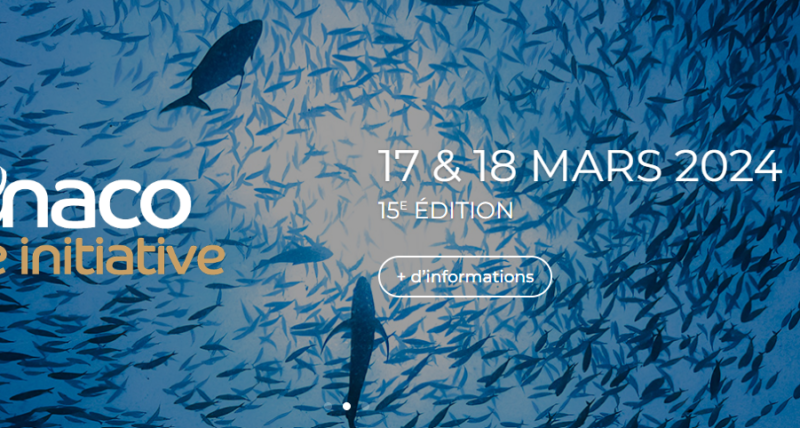
The Tara Polar Station is scheduled for completion in early 2025. Ready for the Oceans Summit to be held on June 7 in Nice, France. Image: François Dourlen /
Tara Ocean Foundation
The Tara Océan foundation’s unique, mobile, drifting polar station was no more than an architect’s drawing last April, when construction began in Cherbourg. Today, she is taking up residence, piece by piece, in the arctic nave of the Construction Mécanique de Normandie shipyard.
A naval structure with rounded forms, flashes of blue-green light illuminate the sheet metal. From between the corners of the centimeter-thick aluminum bars, a smell of hot metal revives the humid air of Cherbourg, France. The screech of the grinders binds the muffled blows of the mallets together. This symphony of metallics runs across the high ceilings of the hangar christened Nef Arctique last September for the visit of Prince Albert II of Monaco. In this section of Chantiers Mécaniques de Normandie, the 4,500 parts of the Tara Polar Station, a French Polar Strategy expedition ship, have been assembled from top to bottom since April 2023. Four decks will eventually stack up to a total height of 11 meters, including 3.6 meters below the waterline. The first two bridges have already been assembled. Workers are adding storeys to the scaffolding above this oval construction, anticipating the arrival of the other two bridges. The geode is in the process of mounting the glass panes some twenty metres from the large entrance doors.
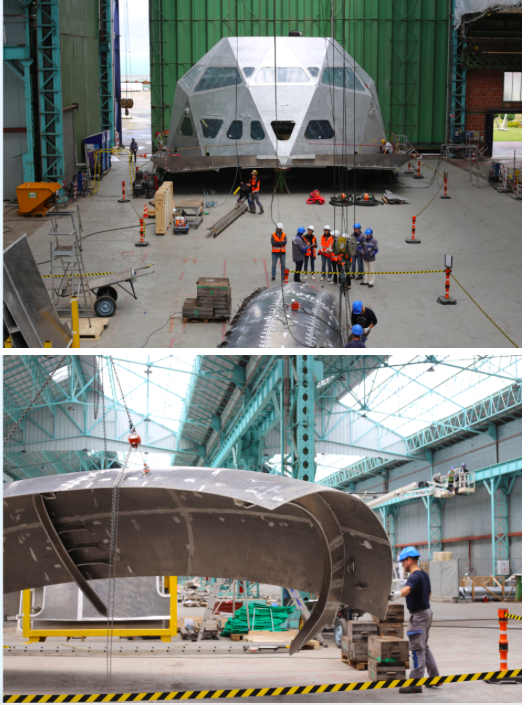
To machine certain curved parts, the shipyard turned to a Dutch company that could produce them more quickly. Images :
Camille Lin
Standing on deck number 2, the largest deck, Vincent Lebredonchel, site manager, shows us the sides: « This is where the waterline will be. As the station drifts through the Arctic pack ice, it will be caught in ice and snow. The pressure forces will be such that « the structure of the station must be reinforced. It will have the Ice Class lA super capacity, » he explains, pointing to the couples, a term used in marine carpentry for the vertical pieces that, together, take on the appearance of a rib cage. The space between each pair is 50 centimetres. « It’s tight, » he articulates over the clatter of machinery. On this deck, a dozen or so people lie on the couples, welding aluminum planks to seal the hull and horizontal reinforcements to prevent the cold from warping them. Wrapped in balaclavas, they weld by the rope. Bows light up their tinted visors with a crackling fire.

The thickness of the hull is 20 mm, and 12 mm for the overhead sections. Thicknesses to which the shipyard is not accustomed. Images :
Camille Lin
In 1908, in the Gautier shipyards of the Pourquoi Pas? in Saint-Malo – Jean-Baptiste Charcot’s polar expedition ship – the couples were so close together they were almost touching. The commander wasn’t planning to get caught in the ice, but was preparing to head to Antarctica to winter with a sturdy ship. According to Serge Lambert, of the association Les amis de Jean-Baptiste Charcot, a joke was circulating among the workers:
« Why are we putting planking on this boat if it’s already watertight anyway by the juxtaposition of the couples? » Joking aside, the hull was lined in places, and inside, the lining was filled with felt and even caulked. On the Tara Polar Station, layers of rock wool and aluminum foil will provide the insulation. They begin to line the interior of the skeletal vessel, reaching 30 centimetres in places. The heat generated by the ship will be used to limit its fuel consumption during the 400 days of drifting in the Arctic Ocean scheduled for 2026-2027.
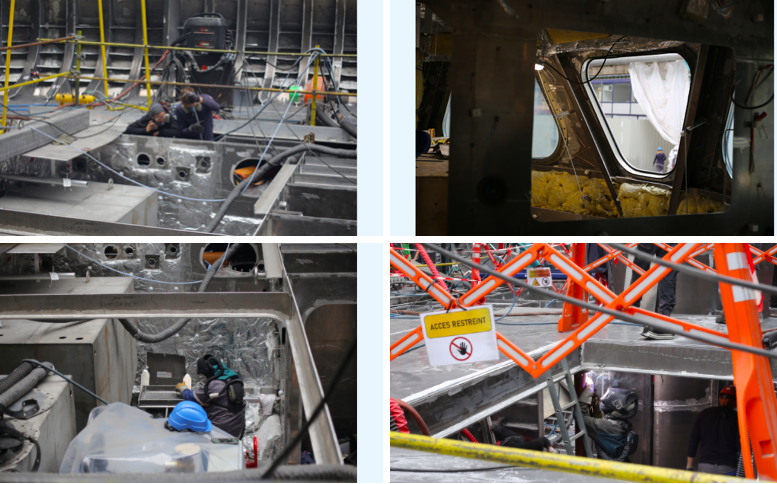
A crate of kerosene could be used to supply a helicopter in a medical emergency. Image : Camille Lin
Under the aluminum plates on deck 2, men and women join bulkheads and hang water and fuel tanks. « It’s not easy to adapt to this shape; it’s the most complex ship I’ve dealt with in three years of boutique work, » explains Alexis, who has been working on this project since its launch. « But it’s a beautiful project. » Through half-open manholes, ventilation ducts run down into the holds. Around the future engine room, against the curved walls, oxygen could run out. In the center of deck 1, a large vertical tube occupies the space. It crosses the station, a little like the Frenchman’s main mast in 1903, except that here it is hollow and will be accessible from deck number 2. This central shaft will open up a view and an entrance beneath the surface of the ice, into the water. Ice diver Laurent Marie would later tell us that it’s a dream situation to be able to « return to the warmth just after immersion in cold water ».
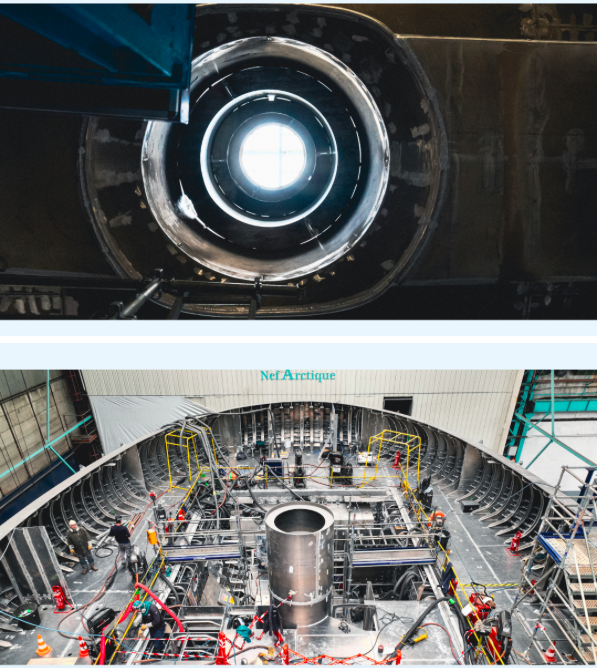
The ship is not built for speed, and will sail at 6 knots. Images: François Dourlen /
Tara Ocean Foundation
In the stern area of deck 2, where hard-toed shoes trample on aluminum shavings and cutting offcuts, dry and wet laboratories and microscopes will provide work space for the six scientists embarking on the polar night. « The boat will be full of equipment, a veritable Noah’s Ark.
In Charcot’s day, they all set off with equipment to the brim, wood, planks… » comments Romain Troublé, Managing Director of the Tara Océan Foundation, on a visit to the construction site. « We’ll be working on the biomass of organisms in the food chain, starting with phytoplankton. The polar station will also be equipped with depth sounders to observe the passage of fish and larger animals. Its future navigation zone is very rarely visited. A number of Russian, Chinese and German expeditions have already drifted into the Arctic high seas in winter, but they mainly study the physics of the ocean and atmosphere.
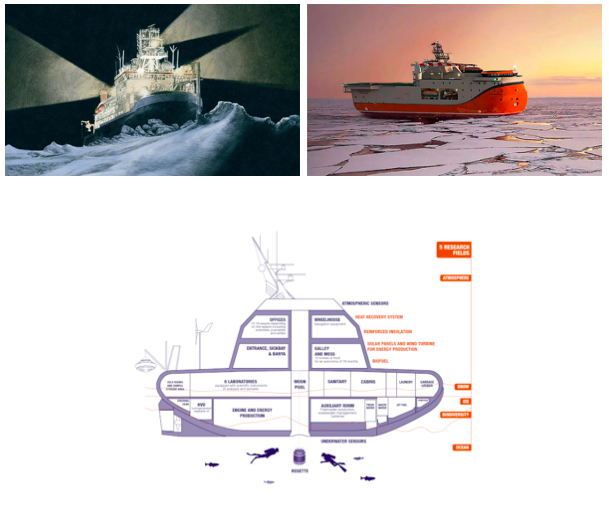
Polarstern scientific expedition ship. Drawing :
Christian-Christian | Plan of the Tara Polar Station.
Image: Tara Ocean Foundation | Russian Station
Severny Polyus. Image: Roshydromet
The project has convinced researchers from CNRS and the French space agency, as well as the French Polar Institute and Olivier Poivre d’Arvor, the French ambassador for the poles. Emmanuel Macron’s government’s France 2030 funding plan has provided 60% of the project’s funds, i.e. 13 million euros. The unique data could provide decisive scientific answers to understanding the Arctic Ocean during the 5th International Polar Year, scheduled for 2032-33. « The moratorium on no fishing in the Arctic needs to be transferred into domestic law, but I’d like to see it extended beyond the high seas in the future, » says Romain Troublé. The station is intended to be a forum for international collaboration, with Canada and Germany among the partners, as well as Arctic Council working groups.
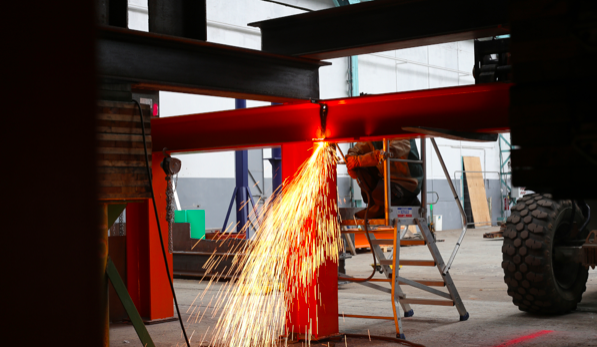
The structure supporting the ship’s frame will have to be dismantled to remove the polar craft from the hangar. Image : Camille Lin
At the construction site, this multi-curved scientific arch will receive its shaft line and propeller in a few weeks’ time. Launching is scheduled for autumn.
Source: Polar Journal


